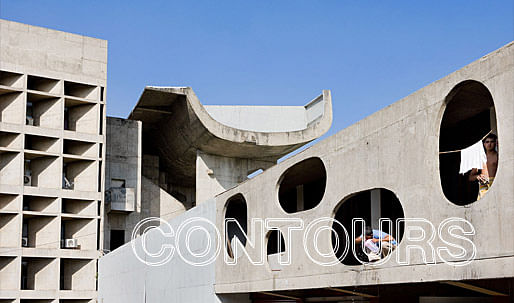

Two issues that effect everyone, whatever social, economic, and professional strata they occupy, are population and urban growth. What’s more, ongoing shifts in population and urbanism across the world, especially in developing nations, have dramatically impacted the building industry. Housing and mixed-use projects in East Asia, Eastern Europe, and Latin America are rapidly increasing.
The availability and shape of housing is directly influenced by population and urban growth patterns. And the regions experiencing the most dramatic growth are in Asia, Africa, and Latin America; urban and population growth in developed nations are, obviously, slowing. For Asia and Latin America, population increases are correlated to GNP and the rise in per capita income, which in turn drive migration from rural to urban zones, i.e. urban growth.
Then there is Africa. As the above study argues, the lasting effects of colonialism throughout the African continent, a factor repeatedly ignored by those who have never experienced it, has rendered those nations’ conditions quite different: “African cities are economically marginalized in the new global economy. African cities are growing despite poor macroeconomic performance and without significant direct foreign investment making it next to impossible for urban authorities to provide low-income housing, high-quality urban services, or sufficient employment.”
To address the disparate needs for increased urban housing worldwide, some countries have used the “land owned in common” model, in which families “receive” space according to their need. There are, for example, the master plans documented by Iwan Baan in his book, Brasilia - Chandigarh: Living with Modernity. Yet what is clear from that documentation is that while we can see the resiliency and adaptability of such structures, the intrinsic difficulties of master plans are equally clear. As argued in the study below, their grandiosity by definition render individual needs invisible.
That is because residential projects in developing nations combine global financial profit-making with local manifestations of society, culture, and environment. Therefore large-scale projects can render entire populations and their needs silent by favoring or privileging a particular vision that is imposed upon them by off-site clients and designers: “housing issues are conflictive and contradictory, touching onto moral-political questions about power, use values/exchange values [i.e. those things developed solely for personal use and those developed for sale at the marketplace], economic profit and cultural meaning.” What’s more, there are also contradictions between what serves individual family units and larger communities. Additionally, such plans are often foisted upon “other” sectors of society because those doing the planning and designing would never deign to live there themselves. An alternative that other nations have pursued is the private ownership model from the outset, which emphasizes individual needs and desires over the needs of the community and larger society. This has its own set of problems.
So the question is, what shape should vs. will the future of urbanization in such different geographic and economic regions as Africa, Asia, and Latin America take? Some suggestions can be found in the book, Measuring America: How the United States Was Shaped by the Greatest Land Sale in History. In it, several historical approaches are outlined. In Britain, rows of semi-detached housing units are built en masse around a central square green. The French model is a round central green with “spokes” of private property connected to it or living in large rental complexes in the city and reserving the free-standing “ancestral” home for the countryside. These urban visions accommodate a central meeting place to commune and communicate with neighbors. The American model of housing and urbanism was born out of a grid-measurement system that parsed land into squares, with each home then placed in the center of that square plot. This resulted in every home being a fair distance from its neighbors and undermined the possibility of a communal green or meeting place. So while many Americans live on plots that can barely provide an easement between themselves and their neighbors, the internalized ideal of distance and intense privacy still prevails, often to the detriment of good neighborly relations.
Clearly, these models grew out of specific social, economic, and cultural conditions, and may have limited applicability to other rapidly urbanizing regions. The question is, what are some strategies that firms or individuals working in these nations are taking now? And what are some of the pervasive difficulties and issues stemming from the inherent economic and social factors?
Sherin Wing, Ph.D., is a social historian who writes on architecture, urbanism, racism, the economy, and epistemology (how we know what we know by researching and examining the agendas inherent in our sources of information) to name a few issues and topics. She is dedicated to exploring issues in ...
No Comments
Block this user
Are you sure you want to block this user and hide all related comments throughout the site?
Archinect
This is your first comment on Archinect. Your comment will be visible once approved.